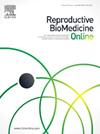衔接理想研究和现实世界的实践:现实世界证据在生殖医学中的潜在作用
IF 3.7
2区 医学
Q1 OBSTETRICS & GYNECOLOGY
引用次数: 0
摘要
循证医学是生殖保健的核心,指导诸如卵巢刺激方案和生育保护策略等干预措施。虽然随机对照试验(RCT)仍然是提供证据和确定因果关系的黄金标准,但其局限性,包括有限的推广能力和高昂的成本,突出了补充方法的必要性。来自电子健康记录和辅助生殖技术(ART)登记等真实世界数据(RWD)的真实世界证据(RWE)有可能弥合受控研究环境与常规临床实践之间的差距,特别是在评估长期和罕见结果方面。然而,RWE面临着相当大的挑战,包括偏见、数据质量的可变性以及建立因果关系的困难。本文探讨RWE在艺术中的作用。尽管RWE很有前景,但它不能取代RCT,特别是在信噪比较低的情况下,比如检测卵巢刺激方案或治疗附加方案的小效果差异。相反,在大多数情况下,RWE被定位为补充随机对照试验,并得到新兴监管框架的支持,如欧洲药品管理局的指导方针和欧盟的组织指令,这些框架强调从ART实践中产生RWE,以加强患者随访和安全监测。对于抗逆转录病毒疗法的利益相关者来说,全面了解RWE的优势和局限性是至关重要的,RWD的目标试验模拟框架也是如此,以促进该领域的发展和改善患者的预后。本文章由计算机程序翻译,如有差异,请以英文原文为准。
Bridging ideal studies and real-world practice: the potential role of real-world evidence in reproductive medicine
Evidence-based medicine is central to reproductive health care, guiding interventions such as ovarian stimulation protocols and fertility preservation strategies. While randomized controlled trials (RCT) remain the gold standard for providing evidence and for establishing causality, their limitations, including restricted generalizability and high costs, highlight the need for complementary methodologies. Real-world evidence (RWE), derived from real-world data (RWD) such as electronic health records and assisted reproductive technology (ART) registries, has the potential to bridge the gap between controlled research settings and routine clinical practice, particularly for evaluating long-term and rare outcomes. However, RWE faces considerable challenges, including bias, variability in data quality, and difficulties in establishing causality. This paper explores the role of RWE in ART. Despite its promise, RWE cannot replace RCT, particularly in scenarios where the signal-to-noise ratio is low, such as detecting small effect differences in ovarian stimulation protocols or treatment add-ons. Instead, in most instances, RWE is positioned to complement RCT, supported by emerging regulatory frameworks such as the guidelines of the European Medicine Agency and the European Union's tissue directives, which emphasize the generation of RWE from ART practice to strengthen patient follow-up and safety monitoring. For ART stakeholders, a comprehensive understanding of the strengths and limitations of RWE is essential, as is the target trial emulation framework on RWD, for advancing the field and improving patient outcomes.
求助全文
通过发布文献求助,成功后即可免费获取论文全文。
去求助
来源期刊

Reproductive biomedicine online
医学-妇产科学
CiteScore
7.20
自引率
7.50%
发文量
391
审稿时长
50 days
期刊介绍:
Reproductive BioMedicine Online covers the formation, growth and differentiation of the human embryo. It is intended to bring to public attention new research on biological and clinical research on human reproduction and the human embryo including relevant studies on animals. It is published by a group of scientists and clinicians working in these fields of study. Its audience comprises researchers, clinicians, practitioners, academics and patients.
Context:
The period of human embryonic growth covered is between the formation of the primordial germ cells in the fetus until mid-pregnancy. High quality research on lower animals is included if it helps to clarify the human situation. Studies progressing to birth and later are published if they have a direct bearing on events in the earlier stages of pregnancy.
 求助内容:
求助内容: 应助结果提醒方式:
应助结果提醒方式:


